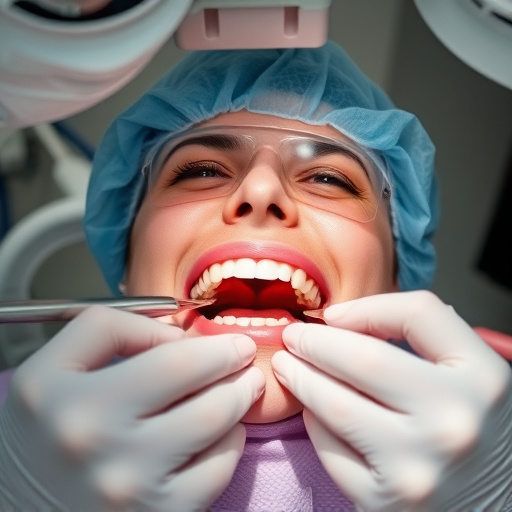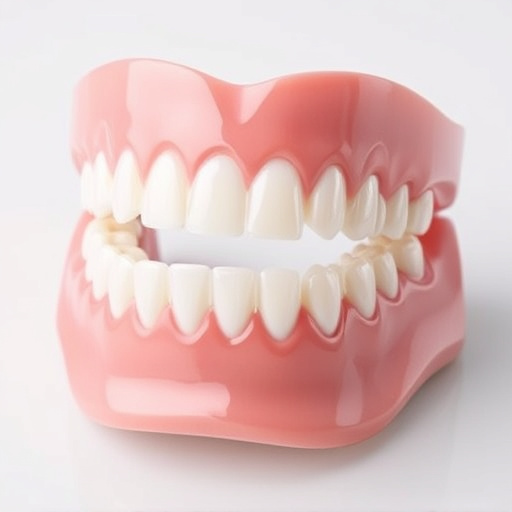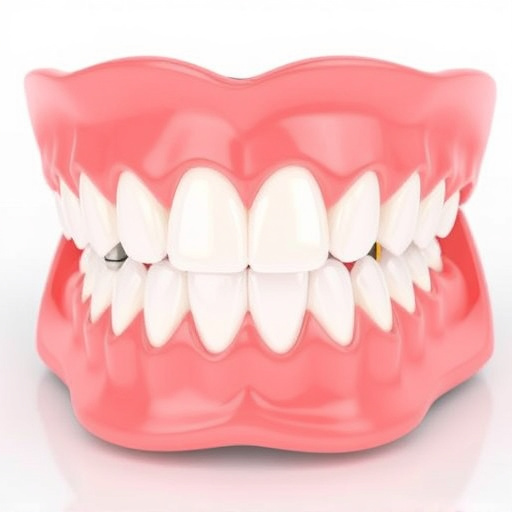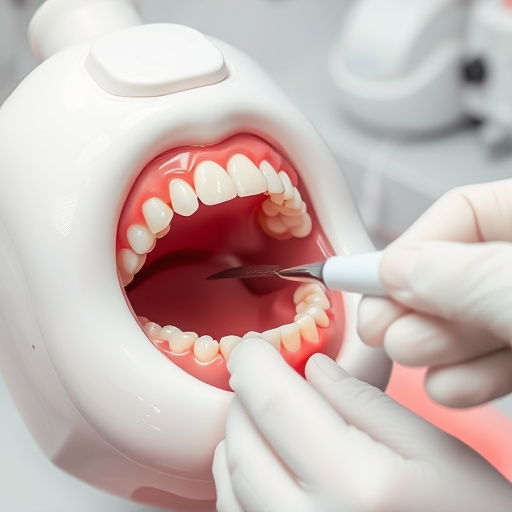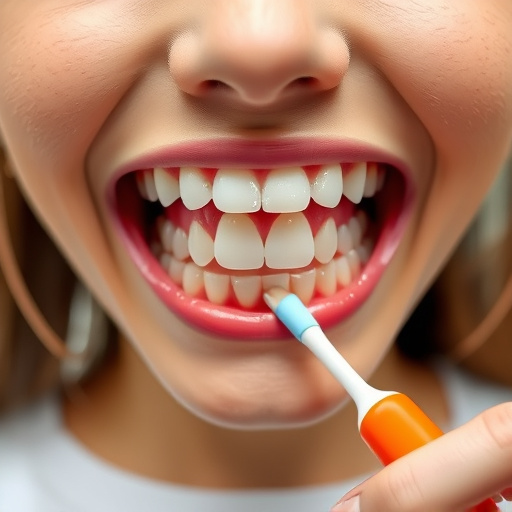Dental crowns and bridges are versatile restorative dentistry solutions, addressing tooth damage/loss while enhancing function and aesthetics. Crowns provide strength and stability after treatments like root canals or as supports for implants. Bridges span gaps, preserving facial structure and preventing neighboring teeth from drifting. In cosmetic dentistry, crowns hide imperfections, matching natural tooth color. Regular dental check-ups, combined with proper daily care using a soft-bristled toothbrush, flossing, and mouthwash, ensure the longevity of these structures. Professional cleanings and semi-annual exams help detect issues early on. Optimal maintenance preserves overall oral health and smile vibrancy.
Dental crowns and bridges are essential restorations for maintaining oral health and aesthetics. This article explores best practices for their maintenance, focusing on both patient care and professional interventions. We’ll delve into the materials used in dental crowns and bridges, providing insights into their longevity and functionality. Learn daily care tips to ensure these fixtures remain strong and effective. Additionally, discover when regular dentist visits are crucial for cleaning and check-ups, promoting optimal oral health.
- Understanding Dental Crowns and Bridges: Materials and Placement
- Daily Care and Maintenance Tips for Longevity
- Professional Cleaning and Regular Check-ups: When to Visit Your Dentist
Understanding Dental Crowns and Bridges: Materials and Placement
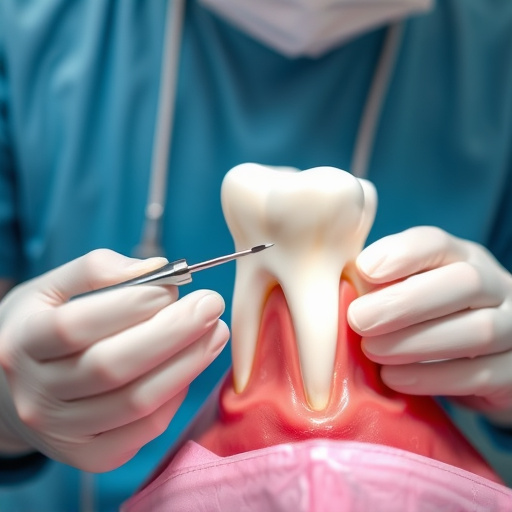
Dental crowns and bridges are integral components of modern dental care, offering solutions for damaged or missing teeth. These restorative procedures are designed to enhance both functionality and aesthetics. Crowns, typically made from materials like ceramic, porcelain, or metal, are placed over a prepared tooth to restore its size, shape, and strength. They are often used after root canal treatments or to secure dental implants. Bridges, on the other hand, span one or more gaps left by missing teeth. They consist of false teeth (also known as pontics) held in place by crowns fitted on either side of the gap. This technique not only improves chewing and speaking abilities but also maintains facial structure and prevents neighboring teeth from drifting out of position.
In cosmetic dentistry, dental crowns are often used for cosmetic fillings or to enhance the appearance of teeth with chips, stains, or misalignments. They can be tailored to match the natural tooth color, ensuring a seamless blend. While bridges provide a stable solution for missing teeth, they require precise fitting and regular maintenance to ensure long-term success. Regular dental check-ups are crucial to monitor the condition of both crowns and bridges, as well as the surrounding gums and teeth.
Daily Care and Maintenance Tips for Longevity
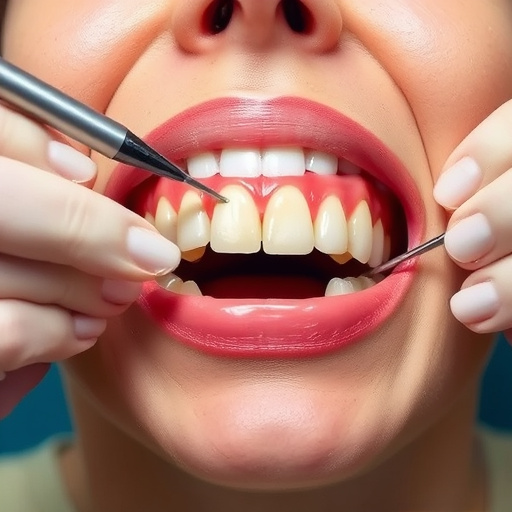
Proper daily care is essential for maintaining the longevity of dental crowns and bridges. Patients should brush their teeth at least twice a day using a soft-bristled toothbrush and fluoride toothpaste. When brushing, pay special attention to the areas where the dental crown or bridge meets the gum line to effectively remove plaque buildup. Flossing once daily is also crucial for cleaning hard-to-reach spaces between teeth and under bridges, preventing gum disease and maintaining overall oral health.
In addition to daily brushing and flossing, using an antibacterial mouthwash can help reduce bacteria levels in the mouth, further protecting dental crowns and bridges. Regular routine oral exams are recommended every six months to ensure proper care. During these visits, a dentist can inspect the condition of fillings, crowns, and bridges, addressing any issues promptly before they become more serious. By combining diligent at-home care with regular professional check-ups, individuals can expect their dental crowns and bridges to last for many years.
Professional Cleaning and Regular Check-ups: When to Visit Your Dentist
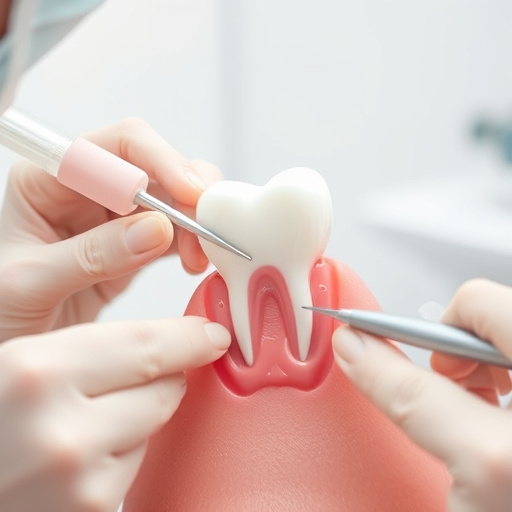
Maintaining dental crowns and bridges is essential for ensuring their longevity and your overall oral health. Regular professional cleaning plays a crucial role in this process. During these appointments, a dentist will thoroughly examine your dental crowns and bridges, removing any built-up plaque or tartar that could weaken them over time. Professional cleaning also helps to detect potential issues early on, such as cracks or decay, which can be addressed before they become more serious problems.
In addition to regular cleanings, scheduling check-ups with your dentist is vital. These visits allow for close monitoring of your dental crowns and bridges, as well as the rest of your oral cavity. Your dentist can provide personalized advice on maintenance, including recommendations for at-home care. Remember, regular dental check-ups are a key component in keeping your smile healthy and vibrant, whether you’ve chosen cosmetic dentistry like dental bonding or permanent solutions like dental crowns and bridges.
Proper maintenance of dental crowns and bridges is key to ensuring their longevity and overall oral health. By understanding the materials used in their construction, implementing daily care routines, and scheduling regular professional cleanings, you can keep your dental restorations in excellent condition for years to come. Regular visits to your dentist will also allow for early detection of any potential issues, preventing more serious problems down the line. With these best practices, you can maintain a beautiful and functional smile.

